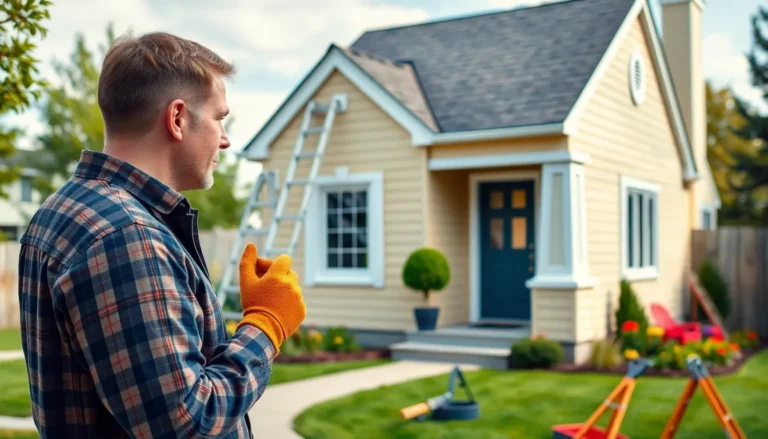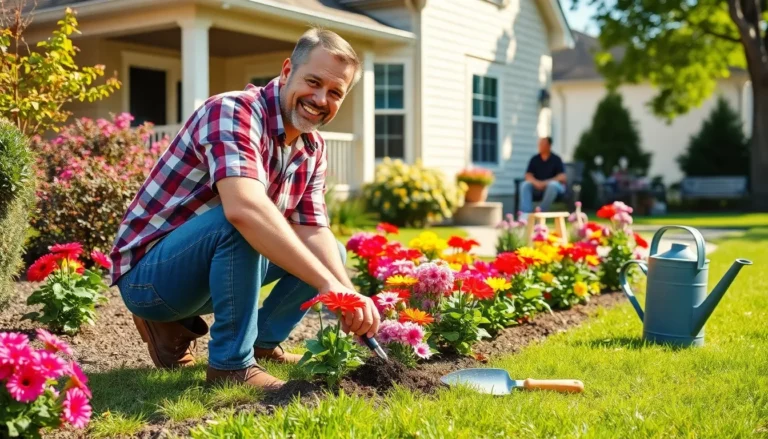Table of Contents
ToggleMoving into a new house can feel like a mix between a thrilling adventure and a chaotic circus. With boxes piled high and that one stubborn piece of furniture that just won’t fit, it’s easy to forget the essentials. That’s where a well-crafted house checklist swoops in like a superhero, ready to save the day.
Overview Of House Checklist
Creating a comprehensive house checklist simplifies the moving process. Prioritizing essential tasks ensures nothing critical is overlooked. Begin with tasks like updating addresses, setting up utilities, and planning logistics for moving day. Organizing items into categories helps track belongings and manage packing effectively.
Check the new home for needed repairs or improvements. This inspection provides insight on necessary actions before moving in. Make a list of essential items such as furniture, kitchen appliances, and cleaning supplies. These categories help prioritize purchases and avoid last-minute stress.
Involving family members in the checklist process fosters collaboration. Assign specific tasks to individuals based on their strengths and preferences. This shared responsibility creates accountability and makes the overall process smoother. Communicating openly about organizational methods further helps.
Visual reminders, like a digital checklist or a physical planner, enhance focus. Each task marked as completed delivers a sense of accomplishment and progress. Utilizing mobile apps specifically designed for moving creates convenience, allowing easy access to the checklist anytime.
Ultimately, routinely reviewing and updating the house checklist maintains organization. Adjusting plans based on unforeseen circumstances ensures continued preparedness. Remember, coordinating aspects of the move with a clear checklist reduces chaos and enhances efficiency during the transition.
Essential House Checklist Items

A detailed house checklist is vital for managing a seamless move. Focusing on interior and exterior tasks ensures nothing essential gets neglected.
Interior Checklist
Addressing the interior starts with utility setup. Confirm electric, water, and gas services are active before arrival. Identify necessary repairs, such as fixing leaky faucets or damaged walls. Prioritize cleaning tasks, including vacuuming carpets and dusting surfaces. Compile an inventory of essential items, like kitchen utensils and bathroom necessities. Label each room for organization during unpacking. Assess security measures by changing locks and checking alarm systems. Ensure smoke detectors and carbon monoxide detectors are operational.
Exterior Checklist
Checking the exterior enhances home safety and curb appeal. Inspect the roof for missing shingles or signs of leaks. Maintain the yard by trimming bushes and mowing the lawn. Verify that walkways and driveways remain clear from debris. Evaluate the state of fences and gates for security. Test outdoor lighting to improve nighttime visibility. Clean gutters to prevent water damage. Review the condition of exterior paint and touch up as needed. Lastly, consider landscaping options that enhance beauty and functionality.
Organizing Your House Checklist
Organizing a house checklist involves systematically addressing tasks that facilitate a smooth transition into a new home. Focus on prioritization and scheduling to enhance efficiency.
Prioritizing Tasks
Identifying essential tasks creates a streamlined approach to the moving process. Start with high-impact activities like updating addresses and setting up utilities, as they are crucial for daily life. Next, tackle necessary repairs to ensure that the home is safe and functional. Packing items based on frequency of use ensures that important belongings are easily accessible upon arrival. Allocate time for inspections and cleaning, as these tasks ensure a fresh start in the new space. Remember, creating a timeline for each task prevents last-minute scrambles and keeps the move organized.
Scheduling Inspections
Scheduling inspections immediately after moving in prevents unpleasant surprises later. Assess essential areas like plumbing and electrical systems during the initial days to address any concerns early on. Choose reliable inspectors to ensure thorough evaluations and follow up on their recommendations promptly. It’s beneficial to prioritize inspections based on potential risks, such as checking for structural or safety issues first. Keep a record of findings and necessary repairs for easy reference. Placing inspections high on the checklist contributes to a safer and more comfortable living environment.
Maintaining Your House Checklist
Maintaining a house involves routine tasks that keep everything in good condition. Regular check-ins and seasonal preparations minimize unexpected issues.
Regular Maintenance Tasks
Regular maintenance tasks include inspecting major systems like the HVAC, plumbing, and electrical systems. Checking smoke alarms and replacing batteries ensures safety in emergencies. Cleaning gutters and downspouts prevents water damage, while changing air filters improves air quality. Servicing appliances such as refrigerators and ovens prolongs their lifespan. Reviewing caulking around windows and doors blocks drafts and reduces energy costs. Updating the house checklist with dates for these tasks promotes accountability and keeps it organized. Each task contributes to a stable and comfortable living environment.
Seasonal Checklist
Seasonal checklists address specific needs throughout the year. In spring, focus on landscaping and preparing the garden for planting. Summer tasks often include checking the roof for leaks and maintaining outdoor spaces. Fall brings the essential chore of winterizing the home, which involves insulating pipes and checking heating systems. During winter, clearing snow from walkways and treating icy surfaces enhances safety. By following a seasonal checklist, homeowners can anticipate needs and maintain their properties effectively. Prioritizing these tasks ensures a well-maintained home all year long.
Having a well-organized house checklist is vital for a smooth transition into a new home. It streamlines the moving process by ensuring that essential tasks are prioritized and completed efficiently. By involving family members and utilizing digital tools, individuals can enhance collaboration and stay on track.
Regularly updating the checklist not only aids in managing immediate needs but also supports ongoing home maintenance. This proactive approach fosters a safe and comfortable living environment. Embracing these strategies empowers homeowners to navigate the chaos of moving and maintain their property effectively, ultimately leading to a more enjoyable home experience.







